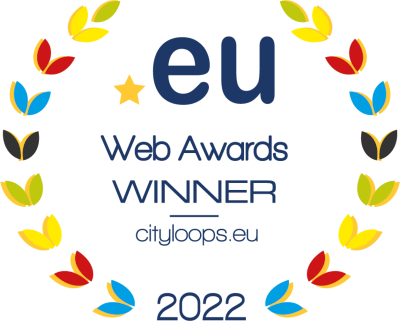Circular procurement
As key economic actors on the demand side, local authorities and other public bodies could use public procurement as a potentially powerful strategic mechanism to promote a circular economy within their territories.
This replication package describes how public procurement activities have been used strategically to support the CityLoops demonstration actions. By digging into the different procurement strategies cities have used (such as criteria and clauses in tenders, innovation market, etc.) in each specific context, it outlines how procurement could be a tool alongside more traditional policy instruments for shifting towards circularity.
Lessons learnt
Though public procurement has to follow rules to allow competition in the unique market, it is a tool procurers should view as strategic when it comes to achieving environmental goals. However, there are necessary pre-conditions for successful circular building procurement:
- Knowledge of the market: market research to understand capabilities and maturity of the supply chain, and especially the local companies, helps to design the project and the procurement process related to it. For instance, for resources matchmaking, it could be very useful to rely on a network of companies, as they know quite well the marketplaces for buying reused or reclaimed material.
- Starting early market dialogue and creating space for informal/formal dialogues to reach out to the right network of suppliers: in an immature market it is essential to identify as soon as possible the companies that could meet the procurers’ needs. Suppliers should be perceived as partners in innovative circular projects. Thus, to define the criteria and clauses in the tender, and to adjust the expectations all along the project, dialogue between the procurers and the suppliers is recommended.
- Working with the relevant departments by breaking silos: an internal collaboration between e.g., the procurement department, urban development department, environmental department and properties department can help select the best process, based on factors such as the level of innovation that the project requires or the maturity of the market. This collaboration enables defining the common objectives to reach in the tender.
- Choosing and defining the appropriate procurement process and circular criteria: a wide range of processes and criteria (technical, evaluation and performance aspects) exist to achieve the goals and finding the appropriate contractor. Alongside choosing criteria, it is also important to set objectives, like targets for CO2 savings, targets for use of circular principles such as Design for separation or the degree of use of reused and/or recycled materials in the building. A relevant example can be found in Høje-Taastrup, where the municipality signed a pre-purchase development agreement with IKANO. Before signing that agreement, IKANO passed a selection process. This resulted in a very fruitful collaboration with a practical and targeted vision of how the area could be developed with high criteria regarding circular construction.
- Starting an early and transparent dialogue with the contractors: defining at the early stage of the project the visions and the ambitions is essential for an easy and collaborative dialogue between the procurer and the contractor throughout the project. For instance, working on a circular construction project can be associated with several practical challenges, since secondary building materials will not always be thoroughly tested and several of the construction processes may still be relatively new. The early collaboration is particularly important in such a construction project to define the framework for innovation and the challenges, including the risk management. This should therefore already be discussed at the negotiation meetings. This dialogue is a prerequisite for assessing as much as possible the circular principles in construction from both an environmental point of view and architectural value, while also taking into account costs and quality.
- Not giving up and keep trying from a common goal: CityLoops cities have seen that the hardest step is the first one. Once you manage to do it in one project, it will be a basis for embedding this in wider procurement practices within the municipality, and then it will become a norm.
CityLoops instruments
Based on lessons learnt across all the demonstrator projects, a Circular Procurement Handbook has been developed, which includes small reports from each demonstration city to provide clues on how to adjust procurement approaches to help promote circularity. The handbook also includes a series of case studies taken from other EU projects and recommendations for European policymakers. The Circular Procurement Handbook has been published on this page.

